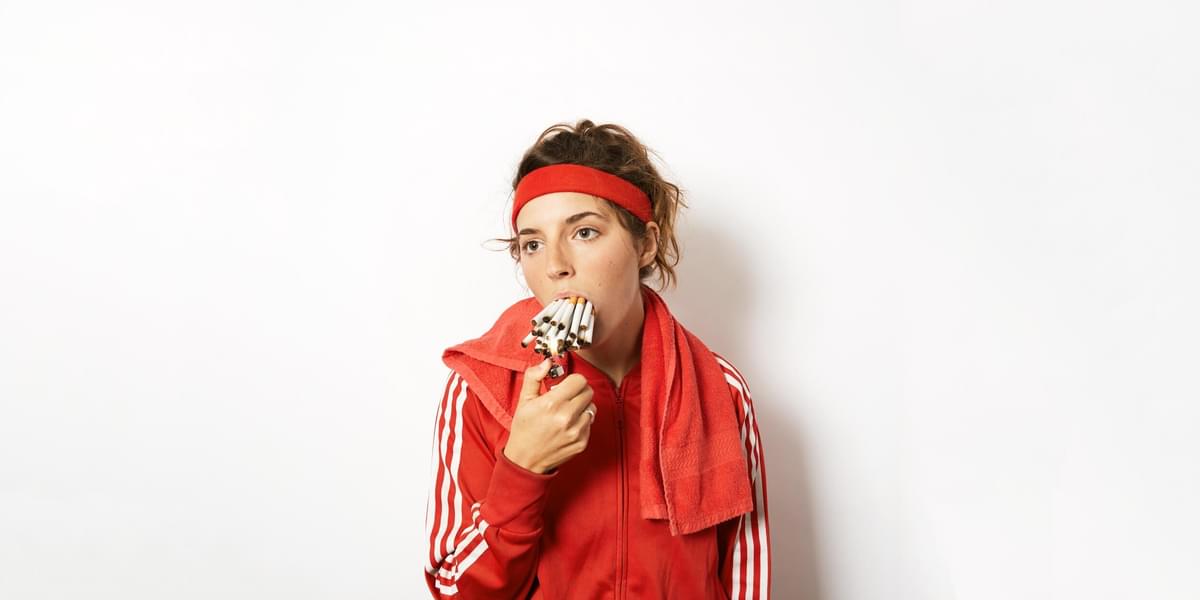
Caroline Rose on Almodóvar, Lynch and the importance of a solid aesthetic
New York's wry, humorous song writer Caroline Rose tells Best Fit how a love of some of the greatest filmmakers helped define her own flamboyant aesthetic.
During my senior year of high school I was what most would consider to be a quintessential loner.
When my friends started doing drugs and getting laid, I’d stay home and watch movies with my mom on the weekends. Believe it or not, as it turns out this period of my life came to be one of the most fruitful in my artistic education and one that ultimately made a significant impact on my work.
I was 17 the first time I saw a Pedro Almodóvar film. Volver, starring Penelope Cruz, is what I learned to be quintessentially Almodóvar-esque––bright, bizarre, morbid, and full of multiplex relationships. His use of complex female and trans characters in leading roles, flamboyant use of color, and injection of completely bizarro twists and turns in his storytelling came as a shock to everything I’d known about movies and narratives.
Over the years I’d come to adore his style in the same way I’d learn to love the grotesque films of David Lynch and the stark, morbid comedy of the Coen Brothers, experimental storytelling of Rainer Werner Fassbinder and Agnès Varda, whimsy of Wes Anderson, and satire of Christopher Guest films. For anyone familiar with my aesthetic, this probably doesn’t come as a surprise.
When I first started working on LONER, I knew I wanted to make an album that felt like my personality––zany, slightly manic-depressive, emotional, and sarcastic. I also knew that the visuals were going to play a huge part in getting all this across. In fact, I was so obsessive about the visuals that I created an entire reference booklet dedicated to the aesthetic I was and still am hoping to depict.
Filled with stills from Twin Peaks, Blue Velvet, The Stepford Wives, The Shining, and Carrie, eccentric photographs from some of my favorite photographers like Horatio Baltz and Autumn de Wilde, and swatches to use as an official color palette, my aesthetic reference book got passed around to everyone from my label and publicist, to every photographer I’ve worked with thus far.

In the same way directors like Lynch and Almodòvar fuse pop elements (Lynch’s use of iconic Americana, old Hollywood, classic crooner soundtracks, Almodòvar’s flaming colors, 60s-style nostalgia, and so on) with the bizarre, I’m attempting to fuse pop elements with serious subject matter in my music, and inject my own personal weirdness into the visuals. Using LONER’s cover art as an example, I’ve pulled from my inspirations by taking an iconic image––in this case an athlete in a tracksuit––and turning that relationship on its head. Because we don’t associate athletes with smoking 30 cigarettes at once the image turns bizarre and comedic very quickly (thanks, David Lynch!).
To build an aesthetic and a style that’s uniquely one's own takes time and, if you’re a musician, probably more than one album cycle. It’s something I keep in mind when creative directing my music videos, stage, press photos, album cover, working with our clothing designer, or when I visualize a cinematic narrative while writing songs. Fusing the pop and pop-art mentality in both music and aesthetic, I’m attempting to to create something that I think accurately represents me and the world with which I’d like to surround myself.
Over the course of a career, with increased budgets, bigger crews, and enough time, what start out as small vignettes can be stitched together to create more and more elaborate works of art. To put it in perspective, Almodóvar started out by splitting his time making short films on a Super-8 and performing in a glam-rock parody duo. Now, his oeuvre is legendary, inspiring people all over the world. Pretty cool.
Get the Best Fit take on the week in music direct to your inbox every Friday

Tunde Adebimpe
Thee Black Boltz

Julien Baker & TORRES
Send A Prayer My Way

Bon Iver
SABLE, fABLE





